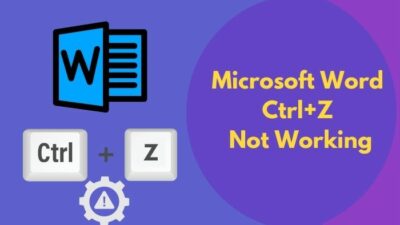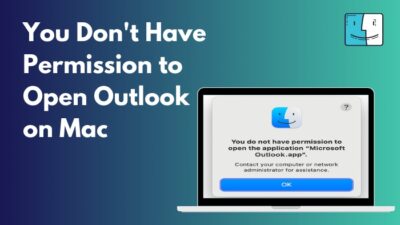“Fetch me information on John from R&D” — instructions like this from higher authority in a large organization could be intimidating, as you might need to go through a long employee list.
This is where the SharePoint Employee directory can make your life comfortable. Provide contact no, email, department, and organization profile of all the staff and look them up with these data when needed.
Neat, isn’t it?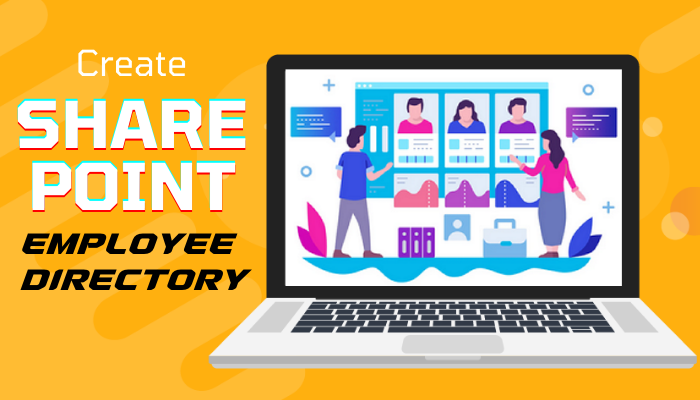
Let’s see how you can do this with the easiest approach.
Key Takeaways
- Import a prebuilt employee list as an Excel or CSV file to avoid extra hassle while building an employee directory in SharePoint.
- Establish a directory to quickly access any employee data along with display pictures, email, contact numbers, or other necessary information.
- Show the Employee Directory on your SharePoint site for rapid actions.
- Generate a new page for your existing SharePoint site and display the employee directory to keep things clean.
Create a SharePoint employee directory with an external list such as Excel, CSV, or via a native SharePoint list. Once the list is generated, add necessary fields and insert more info, such as company name, designation, department, etc., to make each data item unique.
Take a look at the sequential procedure to create a SharePoint employee directory:
Step 1: Create a List
Before building a SharePoint employee directory, an employee list is required. Either import it from an outside source like Excel or CSV file or make one.
Upload an Excel with Employee List
- Go to your SharePoint site Home.
- Press on +New from the ribbon and choose List.
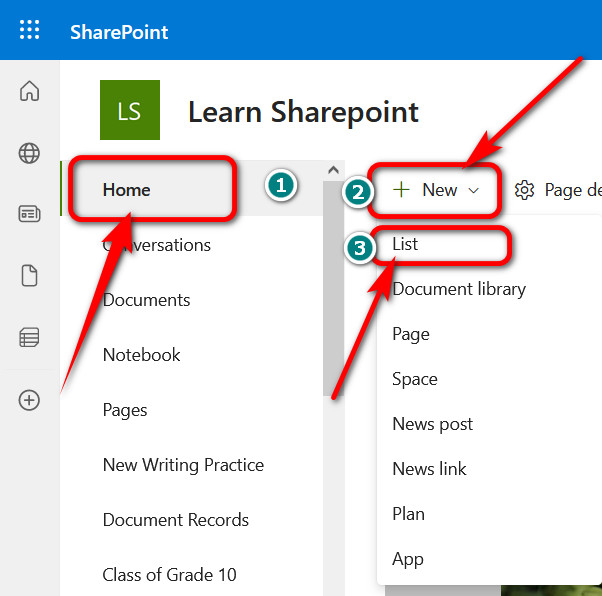
- Choose From Excel from the next window.
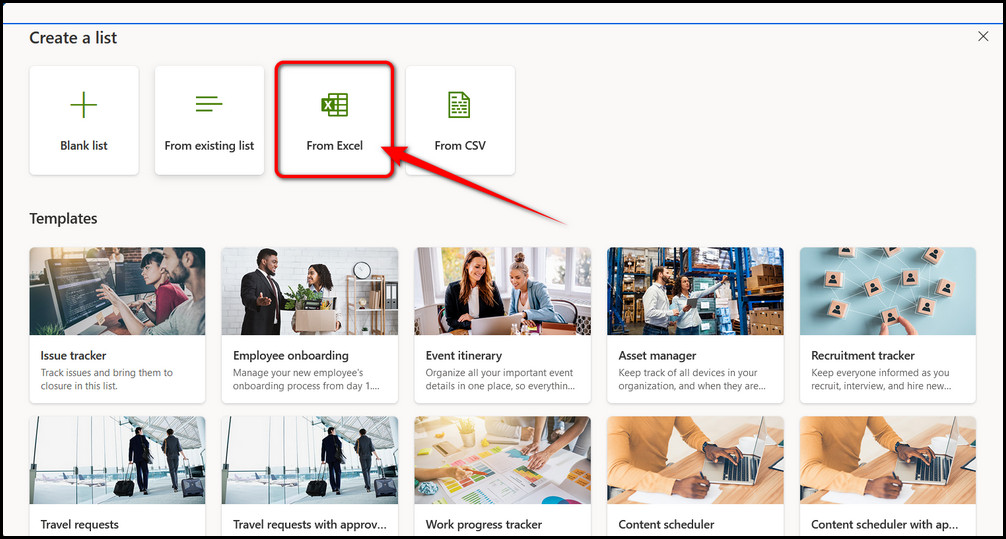
- Click on Upload file and choose your employee list Excel file that ends with .xlsx extension.
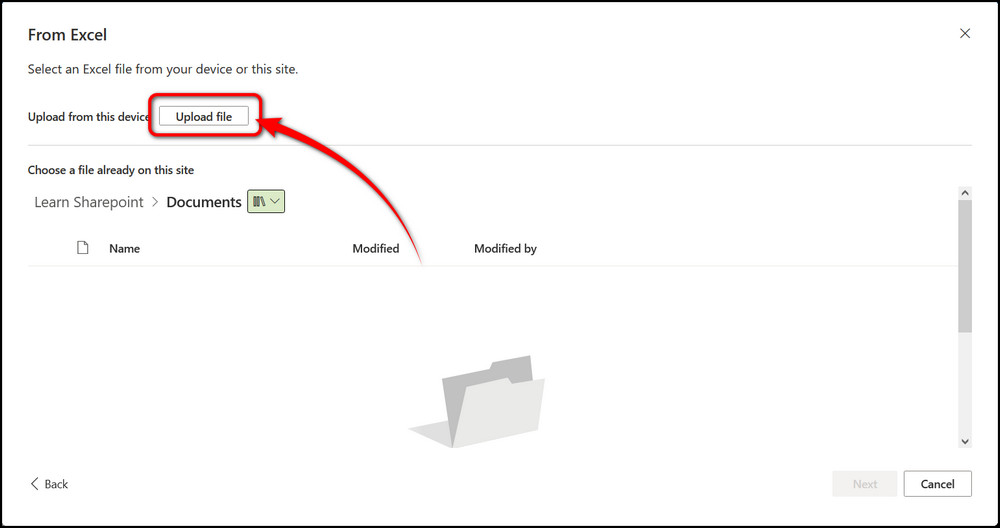
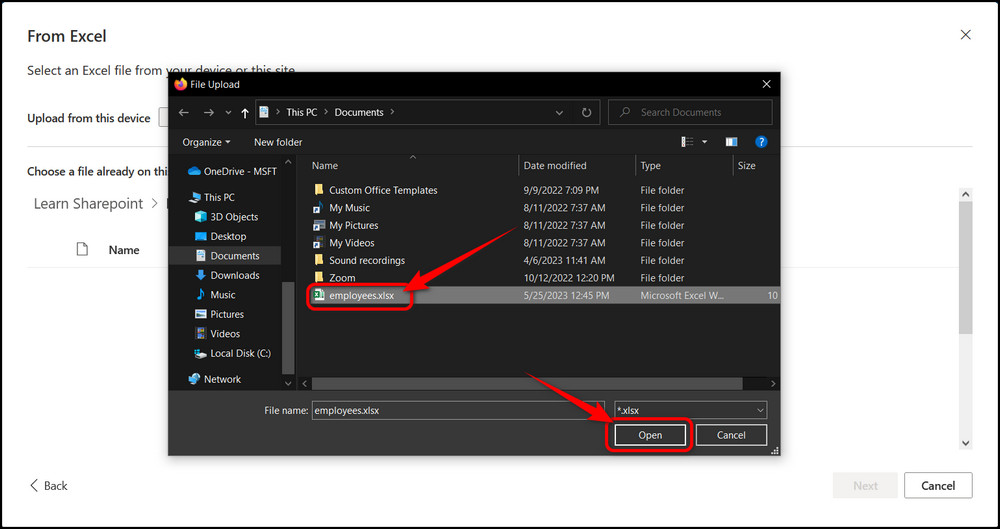
- Hit Open to customize the Excel sheet as a table. A new browser tab will appear with the Excel file.
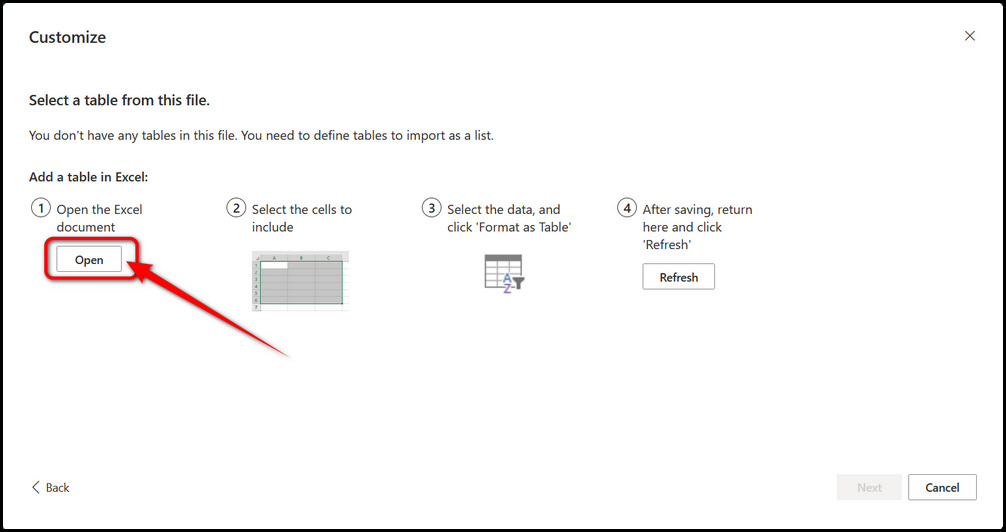
- Drag the mouse and select all data in the Excel sheet once it is opened.
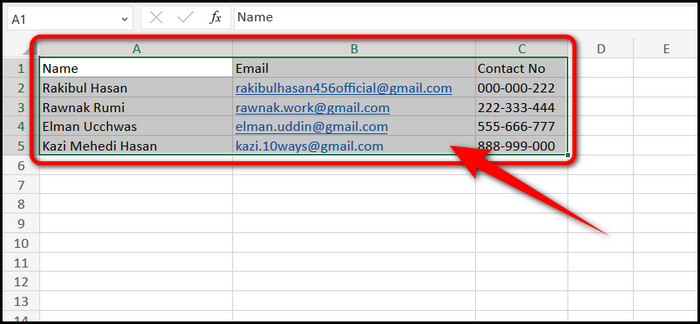
- Press on Format As Table from the ribbon.
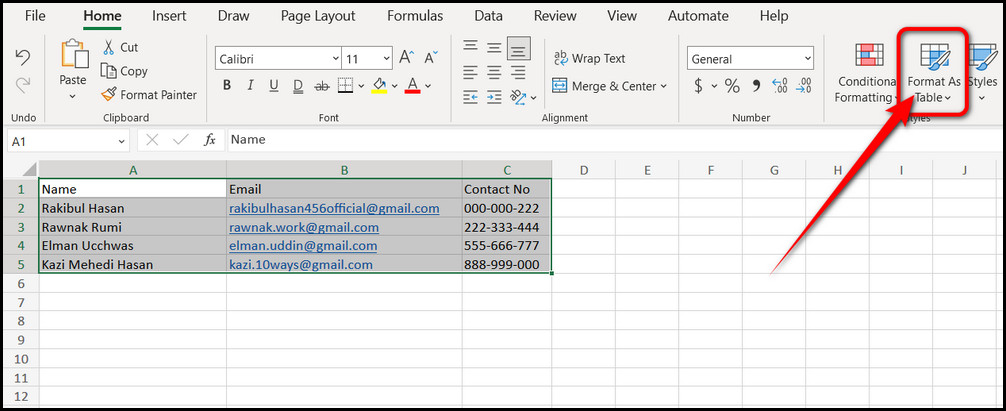
- Select Yes and make sure to check My table has headers from the confirmation prompt.
- Switch to the SharePoint tab and click on Refresh. After a few seconds, table data will appear.
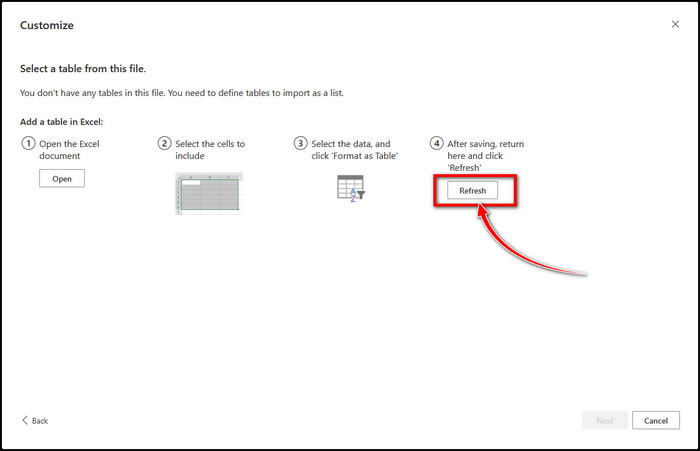
- Click Next from the following screen.
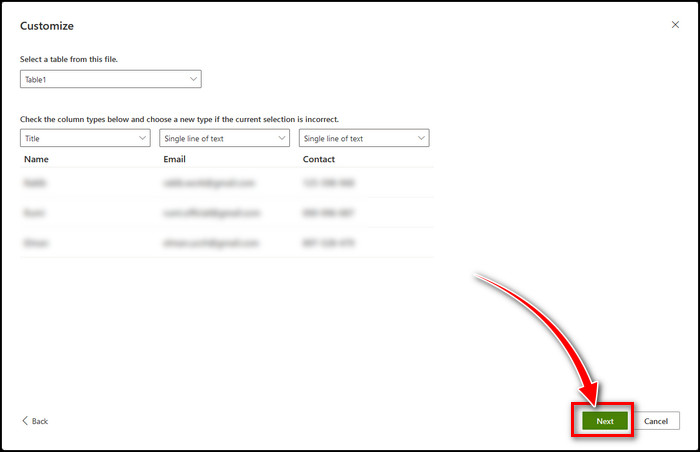
- Name (mandatory) the employee directory and provide a description (optional).
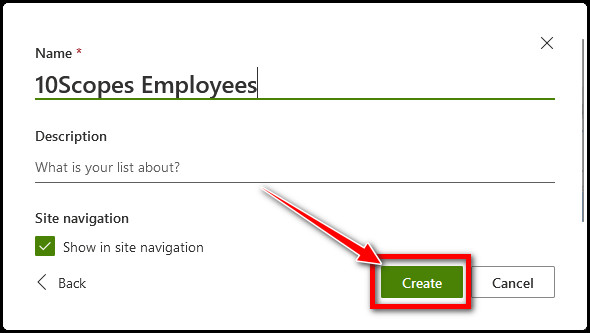
- Select Create and check Show in site navigation box. Within a second, it should appear in the left pane under the SharePoint site.
Importing a list mitigates extra work, but you can always create an employee list in SharePoint from scratch.
Step 2: Insert a Person type Column in the List
The primary draft of the employee list is now being developed. Now is the time to shape it up for a more precise data set. Bind each employee in the organization to items in the list based on their name or other attributes. Also, add more data columns such as age, department, designation, and more as per your need.
For this tutorial, I kept things simple by only providing the email and contact no for each item.
To insert a person type column in the SharePoint list:
- Press on Add column.
- Select Person from the dropdown menu and click Next.
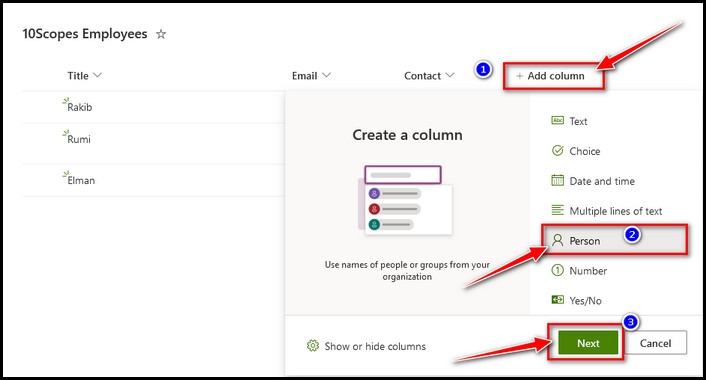
- Give the column a name and do some additional customization as per preference.
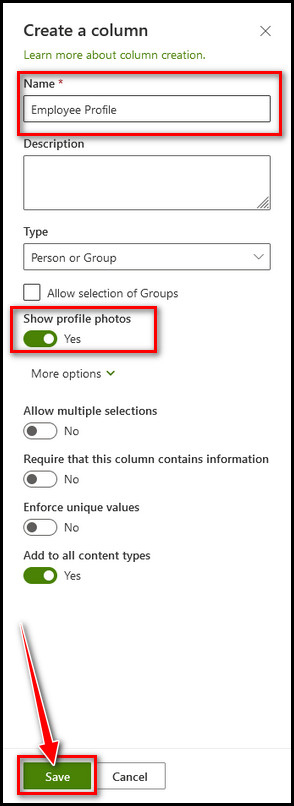
- Save it to finally add it to the employee list.
- Hover on an item and click on the three-dot icon to assign an employee to this list.
- Choose Edit from the context menu. The fields to modify will appear at the right of the screen.
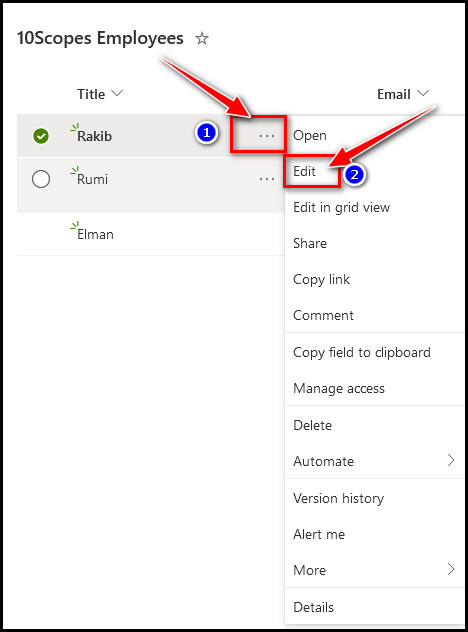
- Type the employee name in the Employee Profile field to add him/her as a list item (name). Add a picture if you want.
- Click Save to make changes.
- Repeat the process for each item in the list.
All the hard work up until now will go to waste if the employee directory is not visible on the SharePoint site, right?
I’ve described two efficient ways below to display the employee directory in SharePoint:
- Go to SharePoint site Home and enter Edit mode.
- Add a new section by clicking on the + icon at the left.
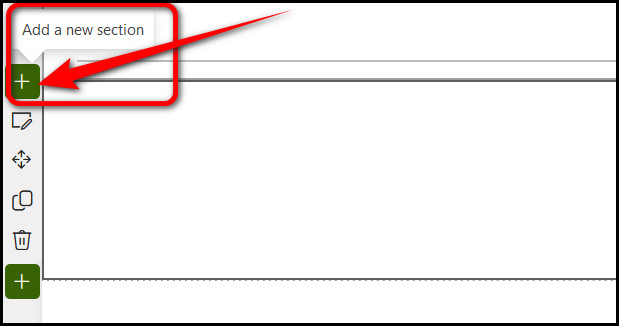
- Hover in the upper region of the new section and press the + button to insert a new web part.

- Choose List from the options.
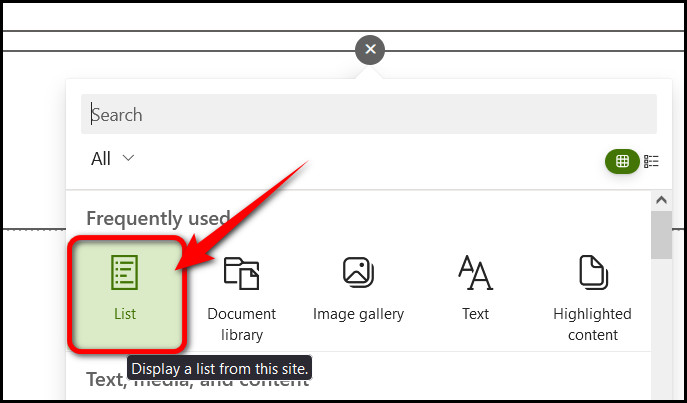
- Pick your employee list out of all other SharePoint lists.
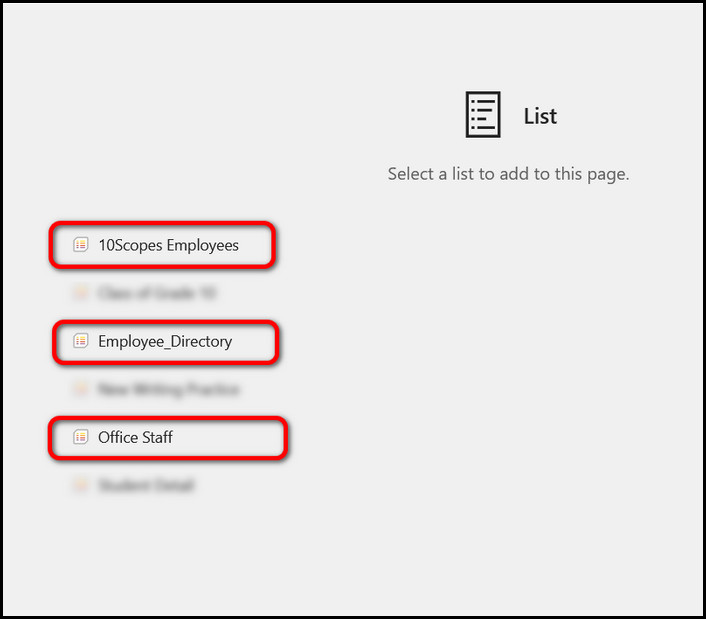
- Click on the Republish button once the employee directory is loaded on the site.
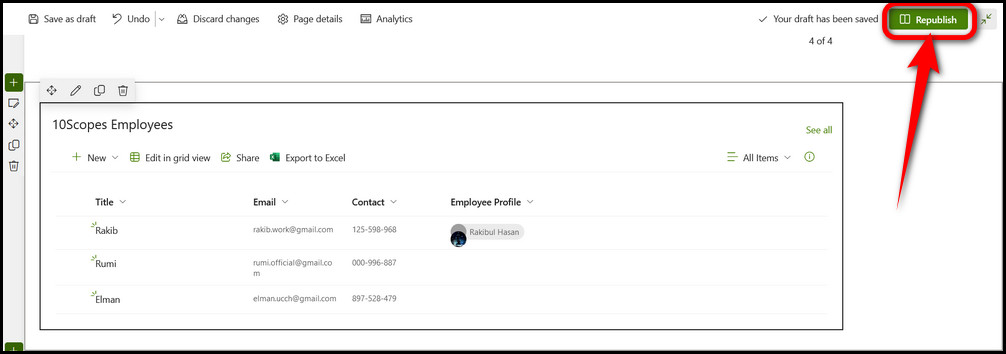
- Select a new Page from the SharePoint site homepage.
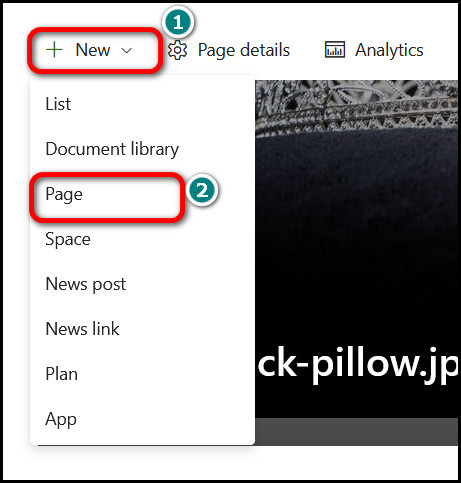
- Choose a template and press on Create page.
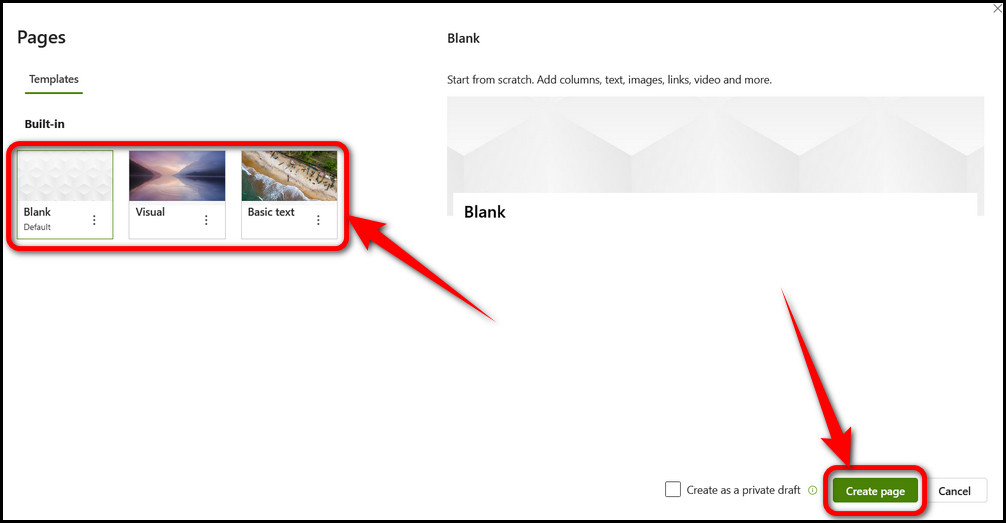
- Add the Title, Description, and employee list you’ve just created. Hit the Publish button next.
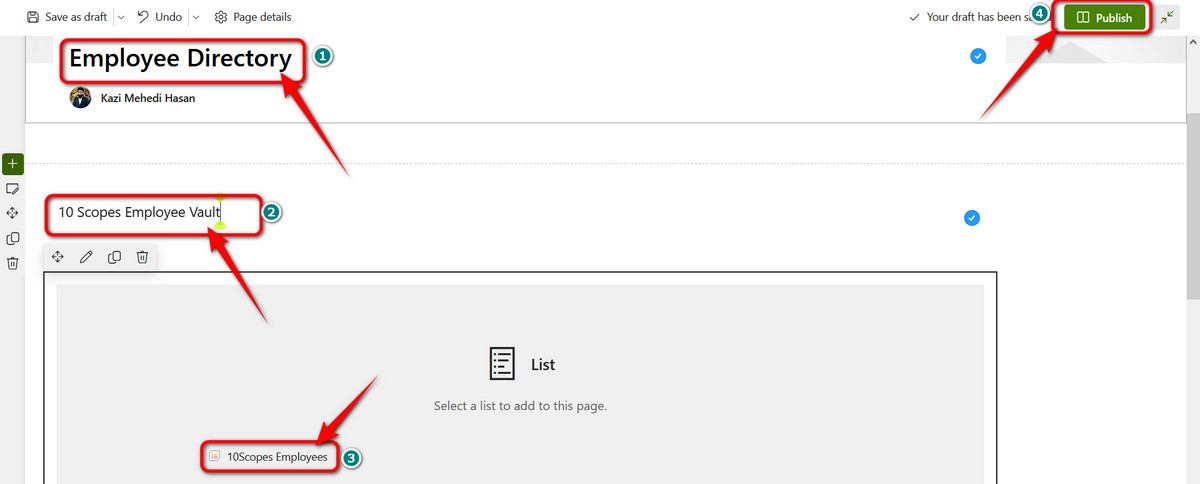
- Access the newly created Employee Directory page from the left navigation panel.
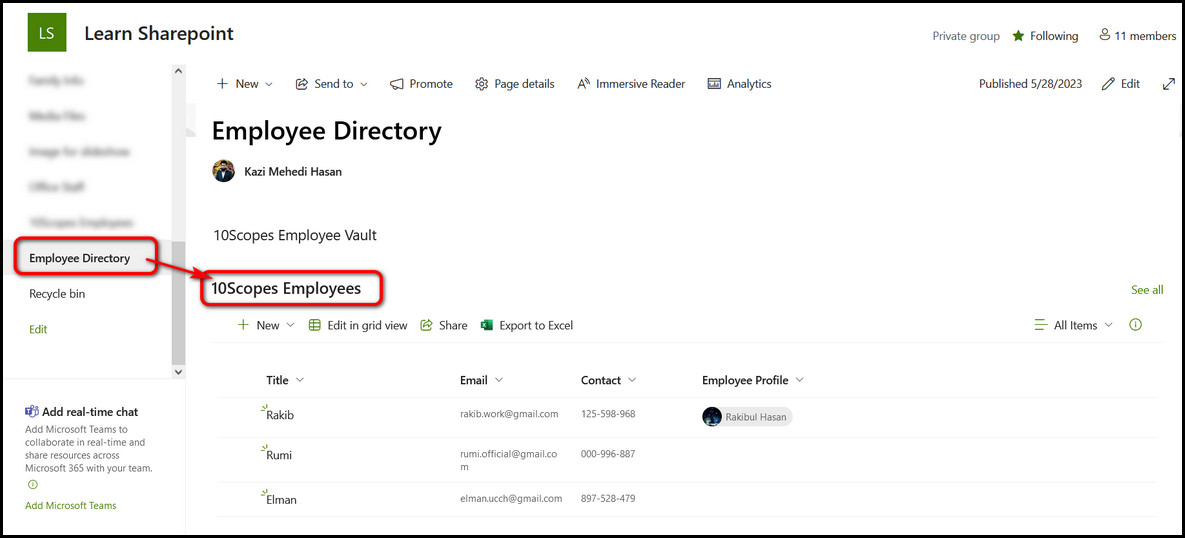
So, now you can instantly get to the employee directory and seek the data you need. You can create separate directories as well for different departments within the organization.

